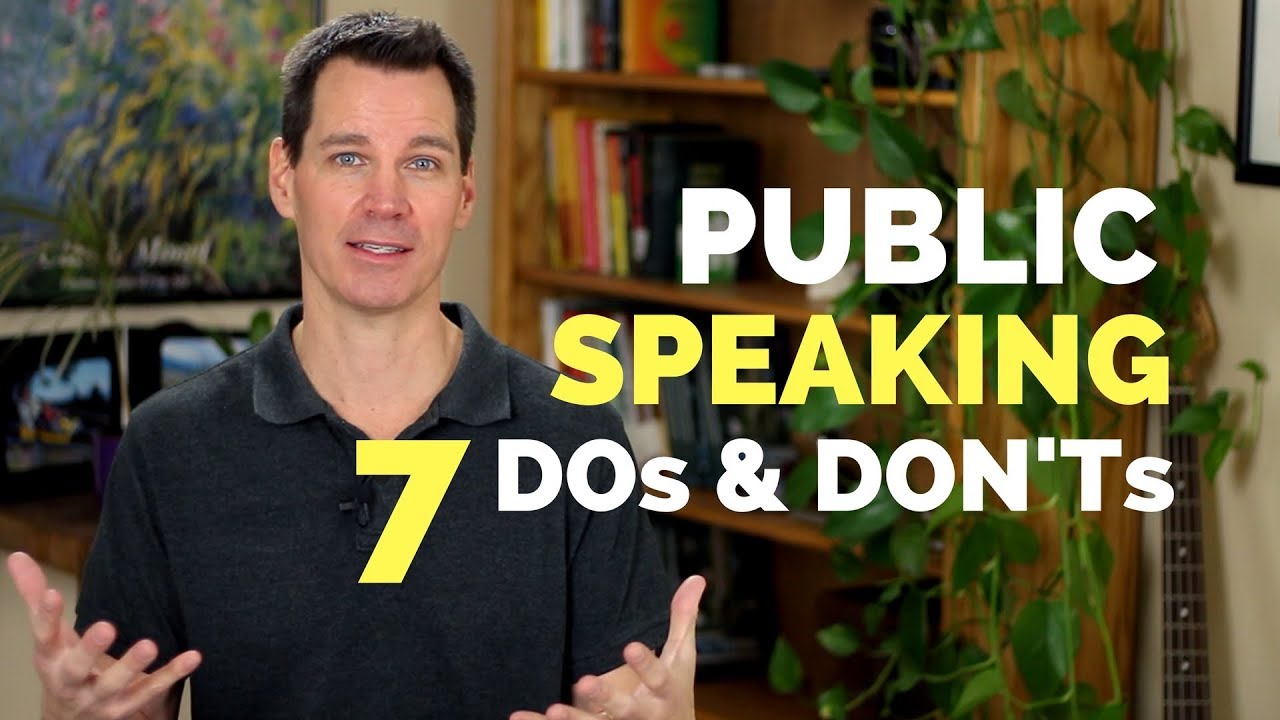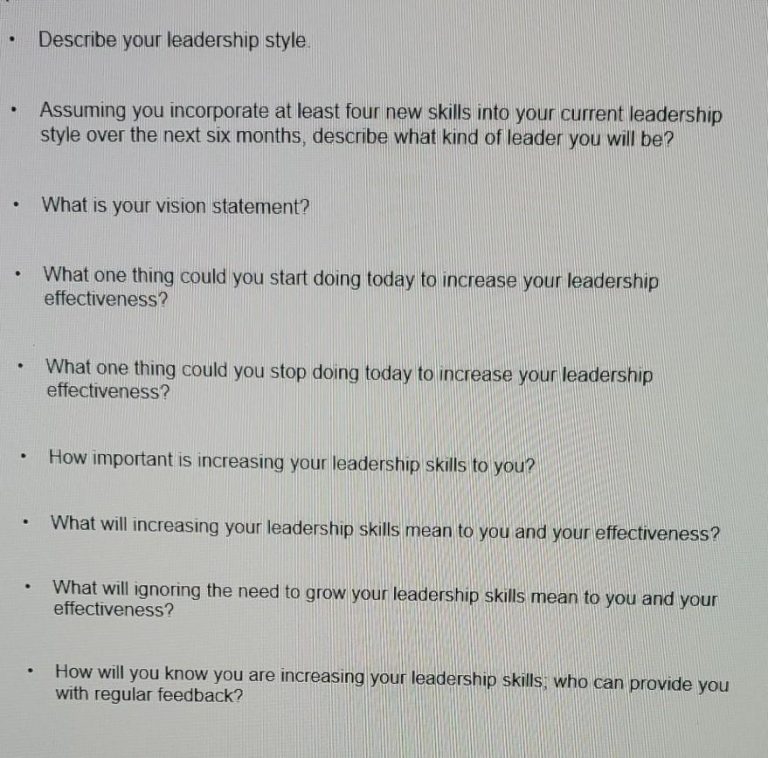Public Speaking for Beginners
Public Speaking for Beginners is a guide to help individuals develop effective speaking skills. This article offers valuable insights, tips, and strategies to help beginners overcome stage fright, organize their thoughts, and engage with an audience.
It also discusses the importance of body language, vocal tone, and audience analysis in delivering a compelling speech. By following these techniques, beginners can build confidence, deliver impactful speeches, and effectively convey their message to others. Whether speaking in public for personal or professional reasons, this article provides the necessary tools and guidance to help beginners become more successful and persuasive speakers.
The Psychology Of Public Speaking
Discover the psychology behind public speaking and gain confidence as a beginner. Understand how to engage and captivate your audience with effective techniques.
Public speaking can be a daunting task, especially for beginners who are unfamiliar with the art of addressing a crowd. The thought of standing in front of an audience, sharing your thoughts and ideas, can trigger anxiety and stage fright.
However, understanding the psychology behind these fears and employing effective techniques to manage them can help you conquer your nerves and deliver confident public speeches. In this section, we will explore the fear of public speaking and discover techniques to overcome anxiety and stage fright.
Understanding The Fear Of Public Speaking:
- Fear of judgment: The fear of public speaking often stems from the fear of being judged by others. This fear can cripple your confidence and create self-doubt.
- Lack of experience: Limited experience in public speaking can contribute to feelings of anxiety and nervousness. The fear of the unknown can be overwhelming.
- Perfectionism: Striving for perfection and fearing mistakes can heighten anxiety levels. The pressure to deliver a flawless speech adds to the fear of public speaking.
- Negative self-talk: Negative self-talk, including thoughts of failure and embarrassment, can intensify the fear of public speaking. These thoughts can create a cycle of anxiety and self-doubt.
Techniques To Manage Anxiety And Stage Fright:
- Preparation and practice: Adequate preparation and practice are essential in managing anxiety and stage fright. Know your speech well, rehearse it multiple times, and become comfortable with the content.
- Deep breathing exercises: Deep breathing exercises can help calm your nerves, regulate your heartbeat, and relax your body before speaking in public. Take slow, deep breaths to reduce anxiety.
- Visualize success: Visualize yourself delivering a successful speech with confidence. Imagine the audience engaging with your words and applauding your performance. Positive visualization can boost your confidence.
- Connect with the audience: Establish a connection with your audience by maintaining eye contact, using gestures, and speaking in a conversational tone. Engaging the audience creates a supportive environment.
- Start with smaller audiences: Gradually ease yourself into public speaking by starting with smaller, familiar audiences. Present to friends, family, or colleagues before venturing into larger crowds.
- Seek support and feedback: Reach out to supportive individuals who can offer constructive feedback and encouragement. Join public speaking clubs or seek guidance from experienced speakers.
- Embrace imperfections: Understand that making mistakes is part of the learning process. Embrace imperfections and view them as opportunities for growth. Accept that not every speech will be perfect.
- Focus on the message: Shift your focus from personal insecurities to the importance of the message you want to convey. Emphasize the value you can bring to your audience, rather than on self-doubt.
- Gradually increase exposure: As you gain confidence and experience, gradually increase your exposure to larger audiences. Pushing your comfort zone will help you overcome fear and build resilience.
By understanding the psychological factors that contribute to the fear of public speaking and implementing these techniques to manage anxiety and stage fright, beginners can develop the confidence and skills necessary to deliver compelling speeches. With practice and perseverance, public speaking can become an empowering and rewarding experience.
Crafting An Engaging Presentation
Crafting an engaging presentation is crucial for beginners in public speaking. Learn to captivate your audience with concise sentences and avoid common overused phrases, ensuring a seamless delivery of your message.
Public speaking can be a daunting task, especially for beginners. Crafting an engaging presentation is crucial to captivate your audience and effectively convey your message. In this section, we will explore techniques to identify your target audience, structure your presentation, and utilize storytelling to make a lasting impact.
Identifying Your Target Audience
To create an engaging presentation, it is essential to identify and understand your target audience. Consider the following factors during this process:
- Demographics: Determine the age range, gender, educational background, and knowledge level of your audience.
- Interests and preferences: Research their interests, hobbies, and relevant industry trends.
- Goals and challenges: Identify their goals, aspirations, and obstacles they may face in relation to your topic.
- Prior knowledge: Gauge their familiarity with the subject matter to tailor your presentation accordingly.
Understanding your audience allows you to tailor your content to their needs, ensuring relevance and resonance throughout your presentation.
Structuring Your Presentation For Maximum Impact
A well-structured presentation keeps your audience engaged and enables them to follow your message easily. Consider the following structure to maximize impact:
- Opening: Begin with a captivating hook that grabs the audience’s attention and creates curiosity.
- Clearly state the purpose of your presentation and provide an overview of what you will cover.
- Main points: Break down your content into key sections or main points, organizing them logically.
- Supporting evidence: Back up your main points with relevant facts, statistics, examples, or anecdotes to add credibility and retain interest.
- Visual aids: Incorporate visual elements such as graphs, images, or slides to enhance understanding and engagement.
- Transitions: Use transitional phrases to smoothly segue between main points and ensure a seamless flow.
- Summarize your key points and offering a memorable closing statement that reinforces your message or call to action.
A well-structured presentation allows your audience to grasp the information easily and ensures that your message resonates with them.
Utilizing Storytelling Techniques
Storytelling is a powerful tool to captivate your audience and make your presentation memorable. Consider the following storytelling techniques:
- Personal anecdotes: Share relevant personal experiences that connect with the audience and illustrate key points.
- Narrative structure: Employ a narrative arc, including an introduction, rising action, climax, falling action, and resolution, to create suspense and emotional engagement.
- Use of emotions: Evoke emotion by appealing to your audience’s desires, fears, or aspirations. This creates a deeper connection and enhances engagement.
- Visual storytelling: Incorporate visual elements, such as vivid descriptions or compelling visuals, to paint a picture in your audience’s minds.
- Relatable characters: Introduce relatable characters or personas to illustrate your main points and make your content more relatable.
- Humor: Use appropriate humor to keep the audience entertained and engaged, ensuring they remain attentive throughout your presentation.
By incorporating storytelling techniques, you can transform your presentation from a mere information-sharing session into a compelling and memorable experience for your audience.
Crafting an engaging presentation involves identifying your target audience, structuring your content effectively, and utilizing storytelling techniques. By following these guidelines, you can deliver a presentation that captivates your audience, keeps them engaged, and leaves a lasting impact. Remember to tailor your presentation to the specific needs of your audience, ensuring that your message resonates with them throughout.
Mastering Non-Verbal Communication
Master the art of non-verbal communication to enhance your public speaking skills. Develop confidence and connect with your audience through gestures, expressions, and body language.
——————————-
Public speaking is not just about the words you say; it also involves non-verbal cues that can greatly impact your message. From your body language and posture to your gestures and facial expressions, these non-verbal elements play a crucial role in effective communication.
Additionally, maintaining eye contact and projecting your voice can enhance your delivery and captivate your audience. In this section, we will explore the key aspects of mastering non-verbal communication and how they can improve your public speaking skills.
Effective Body Language And Posture:
- Standing tall and maintaining good posture exudes confidence and professionalism.
- Use open body language, such as keeping your arms uncrossed and your hands relaxed at your sides.
- Avoid fidgeting or excessive movement, as it can be distracting to the audience.
- Leaning in slightly towards the audience can create a sense of engagement and connection.
- Take up space on the stage to command attention and assert authority.
Gestures And Facial Expressions:
- Use purposeful hand gestures to emphasize points and add visual interest to your speech.
- Make your gestures natural and authentic, ensuring they align with your speech content.
- Facial expressions can convey emotions and help the audience connect with your message.
- Practice using expressions that match the tone of your speech, whether it’s enthusiasm, seriousness, or empathy.
- Be aware of your expressions to ensure they are congruent with the message you want to convey.
Eye Contact And Vocal Projection:
- Maintain regular eye contact with your audience to establish a connection and build rapport.
- Scan the room, focusing on different individuals to engage everyone in the audience.
- Avoid fixating on one spot or constantly shifting your gaze, as it can make you appear nervous or disinterested.
- Project your voice by speaking clearly and using sufficient volume to reach all attendees.
- Vary your tone and pace to evoke different emotions and maintain audience interest.
By mastering non-verbal communication, you can deliver a compelling and influential speech. Effective body language and posture, conscious gestures and facial expressions, as well as maintaining eye contact and projecting your voice, are all key elements that contribute to successful public speaking.
Practice these techniques to captivate your audience and leave a lasting impression.
Improving Vocal Delivery
Improve your vocal delivery and boost your public speaking skills with these beginner-friendly tips. Enhance your confidence and captivate your audience by practicing proper breathing techniques and using vocal variety to engage and connect with your listeners.
Public speaking can be daunting, especially for beginners. The way you deliver your speech plays a crucial role in capturing your audience’s attention and keeping them engaged. To enhance your vocal delivery, focus on two key aspects: articulation and pronunciation, and using vocal variety and tone.
Additionally, practicing effective pausing can further enhance your speaking skills.
Articulation And Pronunciation:
When it comes to articulation and pronunciation, clarity is key. Here are some tips to help you improve:
- Slow down your speech: Speaking too quickly can lead to unclear pronunciation. Take your time and enunciate each word.
- Practice tongue twisters: Tongue twisters are a great way to improve your articulation skills. Repeat challenging phrases to train your mouth muscles.
- Pay attention to consonants and vowels: Ensure that you pronounce each consonant and vowel accurately, emphasizing the sounds correctly.
- Record yourself: Listen to your recordings and identify areas where you can improve your articulation and pronunciation.
- Seek feedback: Ask a friend or mentor to evaluate your speech and provide constructive feedback on your articulation and pronunciation.
Using Vocal Variety And Tone:
To keep your audience engaged, incorporate vocal variety and tone into your speech:
- Use pitch variations: Vary your pitch to add interest and emphasis. Experiment with a higher or lower pitch to convey different emotions or highlight key points.
- Modify your volume: Adjusting your volume adds dynamics to your delivery. Speak softly to create a sense of intimacy or speak loudly to grab attention.
- Express emotions through tone: Use your tone to express the appropriate emotions. Whether it’s excitement, concern, or conviction, adapt your tone accordingly.
- Emphasize keywords: Highlight important words by adding stress or intonation. This will help your audience understand the significance of those words.
- Practice modulation: Work on smoothly transitioning between different vocal aspects, such as pitch, volume, and tone, to create engaging and impactful delivery.
Practicing Effective Pausing:
Pausing effectively can enhance your speech delivery and allow your audience to digest key information. Consider the following:
- Use pauses for emphasis: Pause before or after important statements to create anticipation or to let the information sink in.
- Break up ideas with pauses: Use brief pauses to separate different ideas or sections within your speech. This helps your audience follow along and prevents information overload.
- Breathe and relax: Pausing gives you a chance to take a deep breath, relax, and maintain composure during your speech.
- Practice timing: Experiment with different durations of pauses to find the right balance. Be mindful of not pausing for too long, as it may disconnect your audience.
In Conclusion
By improving your vocal delivery through articulate pronunciation, vocal variety and tone, and effective pausing, you can captivate your audience and deliver impactful speeches. Practice these techniques regularly and seek feedback to refine your public speaking skills. Remember, mastering vocal delivery takes time and dedication, but with consistent effort, you’ll become a confident and compelling speaker.
Enhancing Presentation Slides
Enhance your presentation slides for effective public speaking as a beginner. Elevate your communication skills by creating visually appealing and engaging slides that captivate your audience.
Designing Visually Appealing Slides:
Creating visually appealing slides is essential for capturing and maintaining the attention of your audience. Here are some key tips to enhance your presentation slides:
- Use a clean and simple design: Avoid cluttering your slides with excessive text or images. Keep the design clean and uncluttered, allowing your key points to stand out.
- Utilize white space: White space, or negative space, refers to the empty areas on your slides. It helps create a balanced and visually pleasing layout. Use white space strategically to guide the audience’s focus and prevent overwhelming them with information.
- Choose appropriate fonts and colors: Select fonts that are easily readable, even from a distance. Avoid fancy or decorative fonts that can distract from the content. Use contrasting colors for text and backgrounds to ensure readability, such as dark text on a light background or vice versa.
- Incorporate relevant images and charts: Visuals can make a significant impact on your presentation. Use high-quality images that relate to your topic and support your message. Charts and graphs can provide visual representation of data, making complex information easier to comprehend.
- Keep consistency throughout: Maintain consistency in font styles, colors, and slide layouts to create a cohesive and professional look. This consistency will help your audience follow along and understand your content more easily.
Remember, the goal of your slides is to enhance your presentation, not overshadow it. Keep the design simple and the focus on your message, engaging your audience with visually appealing and well-structured slides.
Engaging With The Audience
Engage your audience effectively in public speaking by connecting with them through eye contact, gestures, and storytelling. Create a captivating experience that leaves a lasting impression.
Establishing Rapport
- Begin your presentation with a warm and friendly greeting to create a positive atmosphere.
- Share a personal story or anecdote related to your topic to connect with the audience on a personal level.
- Use humor to help the audience relax and feel more comfortable.
- Maintain eye contact with individuals in the audience to build a sense of trust and engagement.
- Use inclusive language, such as “we” and “us,” to foster a sense of unity and inclusivity.
Encouraging Audience Participation
- Ask open-ended questions to encourage audience members to share their thoughts and experiences.
- Conduct interactive activities or exercises that involve the audience, such as brainstorming sessions or small group discussions.
- Incorporate multimedia elements like videos or slideshows to capture the audience’s attention and stimulate their interest.
- Use visual aids, such as charts or diagrams, to make complex information more understandable and engaging.
- Show genuine interest in audience responses and actively listen to their input.
Handling Questions And Feedback
- Be prepared to address questions from the audience by researching and anticipating potential inquiries beforehand.
- Encourage audience members to ask questions throughout the presentation, either verbally or through a designated Q&A session at the end.
- Remain attentive and respectful while responding to questions, ensuring that each audience member feels valued.
- If you are unsure of an answer, it is acceptable to admit it and offer to follow up with additional information afterward.
- Consider incorporating feedback mechanisms, such as surveys or polls, to gather feedback and further engage with the audience.
Rehearsing For Success
Learn the art of public speaking for beginners with ‘Rehearsing for Success’. Discover effective techniques to boost your confidence, overcome stage fright, and deliver impactful speeches. Gain valuable insights to master the art of public speaking and captivate your audience.
Setting Up A Practice Routine
- Find a regular time and place to practice: Consistency is key when it comes to rehearsing your public speaking skills. Set aside a dedicated time and place to practice regularly, whether it’s in the morning at your home office or during lunch breaks in a quiet corner of a nearby park.
- Break down your speech or presentation into manageable sections: Rather than trying to tackle your entire speech at once, divide it into smaller sections and focus on one at a time. This will help you master each part and build your confidence as you go.
- Practice with a timer: Time yourself during each practice session to ensure that you stay within your allocated time frame. This will help you avoid going over time during the actual presentation and keep you on track.
- Use cue cards or an outline: Create cue cards or an outline to help you remember the main points of your speech. These visual aids can serve as prompts to keep you on track and prevent you from forgetting important details.
- Incorporate different speaking techniques: Experiment with different speaking techniques, such as using gestures or varying your tone of voice, to add variety and impact to your presentation. Practicing these techniques will make them feel more natural when you’re on stage.
Using Video Recordings For Self-Assessment
- Record your practice sessions: Set up a camera or use your smartphone to record yourself while rehearsing your speech. This will allow you to assess your performance objectively and identify areas for improvement.
- Analyze your body language and non-verbal cues: Pay attention to your body language, facial expressions, and gestures in the video recording. Look for any signs of nervousness or habits that may distract from your message. Practice maintaining confident and professional body language.
- Evaluate your vocal delivery: Listen to your voice on the recording and assess your tone, volume, and pacing. Make note of any areas where you need to adjust your delivery, such as speaking too quickly or mumbling.
- Assess your content and organization: Review the content of your speech by listening to the recording. Evaluate the clarity and logical flow of your ideas. Look for any areas where you can improve the structure or add more supporting information.
Seeking Feedback From Trusted Sources
- Share your practice recordings with trusted individuals: Identify people you trust, such as friends, colleagues, or mentors, and ask them to provide feedback on your practice recordings. Ensure that they are comfortable with giving you constructive criticism.
- Request specific areas for feedback: Ask your trusted sources to focus on specific aspects of your presentation, such as your delivery, body language, or content. This will provide you with targeted feedback that you can work on improving.
- Be open to feedback and receptive to suggestions: Approach feedback with an open mind and a willingness to learn and grow. Consider all the suggestions you receive and implement the ones that align with your goals and vision for your presentation.
- Seek feedback from experienced speakers or public speaking coaches: If possible, reach out to experienced speakers or public speaking coaches who can provide expert feedback. Their insights and guidance can greatly enhance your skills and help you excel in your public speaking endeavors.
Remember, practice makes perfect when it comes to public speaking. Set up a consistent practice routine, utilize video recordings for self-assessment, and seek feedback from trusted sources to refine your skills. With dedication and perseverance, you’ll become a confident and effective public speaker.

Credit: www.saintleo.edu
Managing Unexpected Challenges
Discover effective strategies for managing unexpected challenges in public speaking as a beginner. Gain confidence and overcome hurdles with practical tips and techniques to deliver impactful speeches.
Public speaking can be a nerve-wracking experience, especially for beginners. It’s normal to feel anxious about unexpected challenges that may arise during your speech. However, with proper preparation and a proactive mindset, you can effectively manage these unexpected hurdles. In this section, we will explore three common challenges and provide strategies to handle them:
Dealing With Technical Difficulties
Technical glitches can happen to even the most seasoned speakers. Being prepared to handle them will go a long way in maintaining your composure and delivering a successful speech. Here are some strategies for dealing with technical difficulties:
- Preparation is key: Familiarize yourself with the equipment and venue in advance. Test the microphone, projector, or any other equipment you will be using during your speech.
- Have a backup plan: Prepare alternative means of presenting your material, such as printed handouts or visual aids, in case of technical failures.
- Stay calm and composed: If any technical issue arises during your speech, take a deep breath, and remain composed. Apologize to the audience, and use this opportunity to connect with them on a more personal level while the issue is being resolved.
Handling Interruptions And Distractions
Sometimes, unexpected interruptions or distractions can disrupt your flow and make it challenging to engage with your audience. However, with the right approach, you can navigate these situations smoothly. Consider the following strategies:
- Maintain composure: Take a moment to collect your thoughts and regain your composure. Stay calm and composed, even if the interruption or distraction is frustrating.
- Acknowledge and address: Depending on the nature of the interruption, you can either briefly acknowledge it with a polite response or, if appropriate, incorporate it into your speech humorously.
- Redirect focus: Quickly regain the attention of your audience by redirecting their focus back to your speech. Utilize vocal variety, effective gesturing, or powerful storytelling to re-engage them.
Adapting To Different Speaking Environments
As a beginner, it’s essential to adapt to different speaking environments, as each venue presents its own unique challenges. Here are some strategies to help you adapt effectively:
- Arrive early: Get to the venue early to familiarize yourself with the space, any equipment, and to make any necessary adjustments to your presentation setup.
- Assess the audience: Take a few moments to observe and understand the audience dynamics, such as their size, interest, and responsiveness. Adjust your delivery accordingly to connect more effectively.
- Utilize your surroundings: Make use of props, visuals, or the layout of the space to enhance your speech. Incorporate elements from the environment into your presentation to make it more engaging.
Remember, unexpected challenges are an inevitable part of public speaking. By preparing in advance, staying calm and composed, and adapting to different circumstances, you can effectively manage these challenges and deliver a powerful speech. With experience, you will become more confident in handling unexpected situations, making you a more versatile and skilled speaker.
So embrace the challenges and let them fuel your growth as a public speaker.
Expanding Your Public Speaking Opportunities
Discover effective strategies to expand your public speaking opportunities with this beginner’s guide. Enhance your confidence, refine your delivery, and overcome any fear of public speaking to captivate your audience effectively.
If you’ve dipped your toes into the pool of public speaking and are ready to take it to the next level, you’re likely looking for ways to expand your opportunities. Here are a few strategies to help you dive deeper into the world of public speaking:
Joining Local Toastmasters Clubs Or Speaking Groups:
- Boost your confidence: Toastmasters clubs provide a supportive and constructive environment that allows you to practice your speaking skills in front of a friendly audience.
- Receive valuable feedback: By joining a Toastmasters club or local speaking group, you’ll have the chance to receive feedback from experienced speakers, helping you refine your delivery and presentation skills.
- Expand your network: These clubs often attract individuals from various professional backgrounds, giving you the opportunity to connect with like-minded individuals who can provide speaking opportunities or share valuable insights.
Seeking Out Speaking Engagements And Conferences:
- Research relevant events: Look for conferences, seminars, and industry events that align with your expertise or interests. These gatherings often feature speaking opportunities where you can showcase your knowledge and gain exposure.
- Pitch your expertise: Once you’ve identified suitable events, craft a compelling pitch highlighting your expertise and why you would be a valuable addition to their lineup of speakers.
- Join speaking databases: Numerous online platforms connect event organizers with speakers. Create a profile on these databases, showcasing your areas of expertise and previous speaking engagements.
Building A Professional Online Presence For Speaking Opportunities:
- Create a website or blog: Establishing an online presence through a website or blog can boost your visibility as a speaker. Share insights, expert advice, and information relevant to your niche to attract potential speaking opportunities.
- Optimize your content: Implement search engine optimization (SEO) techniques to enhance your website’s visibility in search engine results. Incorporate relevant keywords, create engaging meta descriptions, and ensure your website is user-friendly and mobile-responsive.
- Leverage social media: Utilize social media platforms to showcase your speaking achievements, promote upcoming events, and engage with your audience. Connect with other industry professionals, event organizers, and potential clients to expand your speaking network.
By utilizing these strategies, you can expand your public speaking opportunities, boost your confidence, and establish yourself as a reputable speaker within your niche. Keep honing your skills, seeking new opportunities, and building your online presence to reach new heights in your public speaking endeavors.
Frequently Asked Questions Of Public Speaking For Beginners
How Do You Start Public Speaking For Beginners?
To start public speaking as a beginner: – Gain confidence by practicing in front of a mirror or with friends. – Prepare and research your topic thoroughly to be well-prepared. – Begin with smaller audiences, such as family or friends, to build experience.
– Join public speaking clubs or take courses to improve your skills.
What Are The 5 P’S Of Public Speaking?
The 5 P’s of public speaking are preparation, practice, projection, presence, and persuasion.
What Are The 7 P’S Of Public Speaking?
The 7 P’s of public speaking are: preparation, practice, projection, pace, pausing, power, and passion.
What Are The 4 P’S Of Public Speaking?
The 4 P’s of public speaking are preparation, practice, presence, and poise.
Conclusion
Mastering the art of public speaking is a significant accomplishment that can greatly enhance your personal and professional life. By understanding and practicing the key techniques discussed in this blog post, you can confidently navigate the challenges of public speaking with ease.
Remember to start with a clear and concise message, engage your audience with compelling storytelling, and incorporate visual aids to enhance your presentation. Additionally, practice your speech aloud and seek feedback from trusted individuals to improve your delivery. Developing your public speaking skills takes time and dedication, but the rewards are well worth the effort.
So go out there and embrace every opportunity to speak in public, knowing that you have the knowledge and tools to captivate and inspire your audience. Let your voice be heard and your message resonate, as you unlock the power of public speaking.





